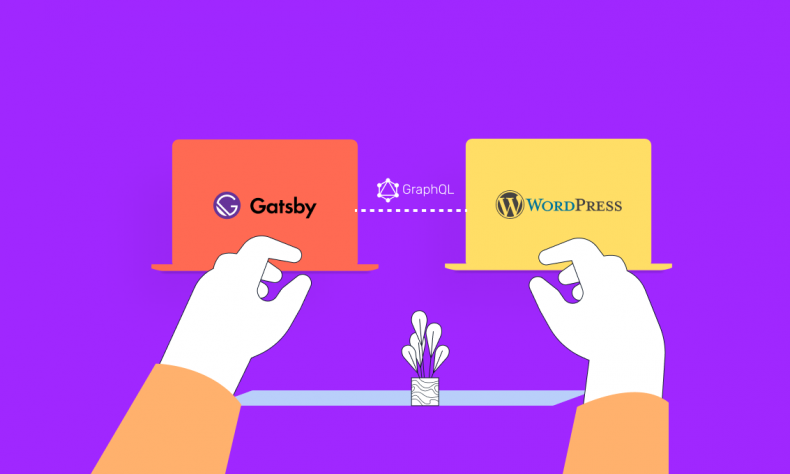
WordPress has a large variety of free themes that can be downloaded and installed simply from the site’s admin interface. Aside from free themes, many service providers also provide premium themes that may be purchased from third-party websites and installed on your WordPress server. However, no one theme can meet all of your requirements, and you’ll need a number of extra plugins to do it. If you decide to purchase a commercial headless WordPress theme, you should perform some basic inspections before beginning to develop a long-term website.
Here are ten things to think about before purchasing a WordPress theme.
Domain Usage
Most commercial themes come with unlimited domain usage, which means you may use the theme on as many sites as you like without paying more. If you just have one site, this should not be an issue; however, if you have numerous sites or want to build new sites or subdomains, you should look for a theme that allows for limitless domain usage. A solid theme with limitless domain usage, for example, is great for a WordPress multisite scenario, where you may install a theme on a single domain and distribute it over several subdomains.
Theme Updates
When purchasing a theme, read the terms and conditions carefully. While some firms guarantee lifetime support and updates, the majority of theme vendors only provide assistance for one year. A lifetime free update theme is a wonderful choice if you operate a very simple site and don’t want recurrent costs, but there is always a danger with this sort of theme. Because WordPress updates its version, it is necessary for themes to be updated to the most recent WordPress version. If your theme hasn’t been updated in years, your site will become a target for hackers and won’t be able to use plugins designed for the most recent WordPress version. Annual subscriptions, on the other hand, need a recurrent price that should be factored into your budget with hosting and plugin costs.
Theme Support
When you’ve hit a snag and need assistance recovering your site, getting aid is critical. Themes, in particular, frequently clash with plugins, making help difficult because the support consultant must get onto your site and determine which plugin is causing the problem.
Before purchasing a theme, be sure to check the following items for support:
- Check the company’s support term; if it’s less than a year, you’ll have to pay for further support and updates.
- Examine the forums to see if people are receiving acceptable responses. To read forum content, you may need to create an account.
- If the theme’s documentation is available, go over it to be sure you’ll receive what you want.
- Some themes additionally provide sample demo data for installation, allowing you to create a dummy site with dummy content and test it on your development server. Demo data will be extremely helpful in determining whether or not the plugins you intend to utilize on your site are compatible.
Theme Features
Stackground Determine the sort of theme you require for your website before beginning your search. Otherwise, you can get lost in the sea of WordPress themes and wind up getting something that isn’t exactly what you need, or luckily finds a headless WordPress theme. Make a checklist with the following elements and use the filters to choose themes that meet your needs.
- How many columns do you require? Although some themes allow you to customize column layouts, they may not look nice. Decide if you want a two-column, three-column, or multiple-column newspaper layout. Do not rely on shortcodes to build columns; doing so will take a long time on a larger site and will be impractical to utilize on each article.
- Make sure the navigation menu and layout are appropriate for you. Examine the possibilities of menu items for login, registration, shopping cart, and other functions being incorporated into the menu.
- Another consideration in determining the style and size of various sorts of content is typography. Ascertain that the theme has default font and style choices.
- Check to see if the theme’s header and footer areas may be customized. Some designs don’t have footer columns, which may be inconvenient for you.
- The site’s home page is the most often visited by visitors. As a result, look at the options available on the main page, such as sliders, headers, logos, testimonials, parallax effect, contact us forums, and so on.
Ecommerce Support
If you want to sell products, you should choose a WordPress theme that is compatible with Woo Commerce or another platform. Check to see if the theme includes a built-in shopping cart, PayPal or other payment processor connection, and a beautiful layout for selling online.
Search Engine Optimization
Though it’s impossible to forecast a site’s search engine success before utilizing it for a few months, some aspects, such as page speed, maybe assessed ahead of time. If you like an existing site, for example, the best approach to locate the theme is to utilize tools like a WordPress theme detector. It will give you a general notion of how it is doing in terms of search results for the searches.
Check for features like breadcrumbs, which allow search engines to display your categories in search results, and you should be able to supply your own Meta description for each article, rather than relying on the content’s description.
Mobile Compatibility
Choose a theme that supports responsive design, as Google’s search algorithm for mobile searches is tightening. Examine the theme’s demo on a variety of devices to check that it is visible in both horizontal and vertical orientations.
Built-in Translation Panel
When building a site with a primary language other than English, translation is a factor to consider. Choose a theme that has a built-in translation for text on sites like the 404 page, archive page, comment text, and so forth.
Integrated Social Media
Nowadays, the situation has evolved to the point where no website can operate without the help of social media. It is critical to have unified social integration on your theme in order to expand the popularity of your site. Social integration is necessary in areas like post sharing, sidebar widgets, and comment login, for example, using minimum symbols like Facebook, YouTube, Twitter, Google+, and so on. While external plugins can handle this better, seek a theme with integrated social icons to encourage visitors to share, follow, and comment on your material.
Pricing
Pricing is the most significant consideration when purchasing a traditional or headless WordPress theme. Themes are often offered for $50 – $100 with yearly maintenance and updates, but headless WordPress themes may cost almost 500USD or more. depending on the features. When comparing prices, keep the following aspects in mind:
- Consider how many themes you’ll use on all of your sites at the most; unless you run a web design firm, you’ll probably just use a handful. As a result, avoid tempting offers like “pay $50 and gain access to all 50 themes.” In your lifetime, you will never be able to test and utilize all 50 themes.
- Even if the theme is $70, it’s still a good idea to check over the features and buy from a reputable provider.
- Don’t always hunt for a bargain or a coupon; saving a few bucks and then purchasing a subpar theme will utterly derail your online presence’s dream.
- Again, don’t expect anything for free with the theme, such as a supplementary theme or a plugin. Over time, you may decide not to utilize the complimentary items and instead focus on the main theme you wish to purchase.






